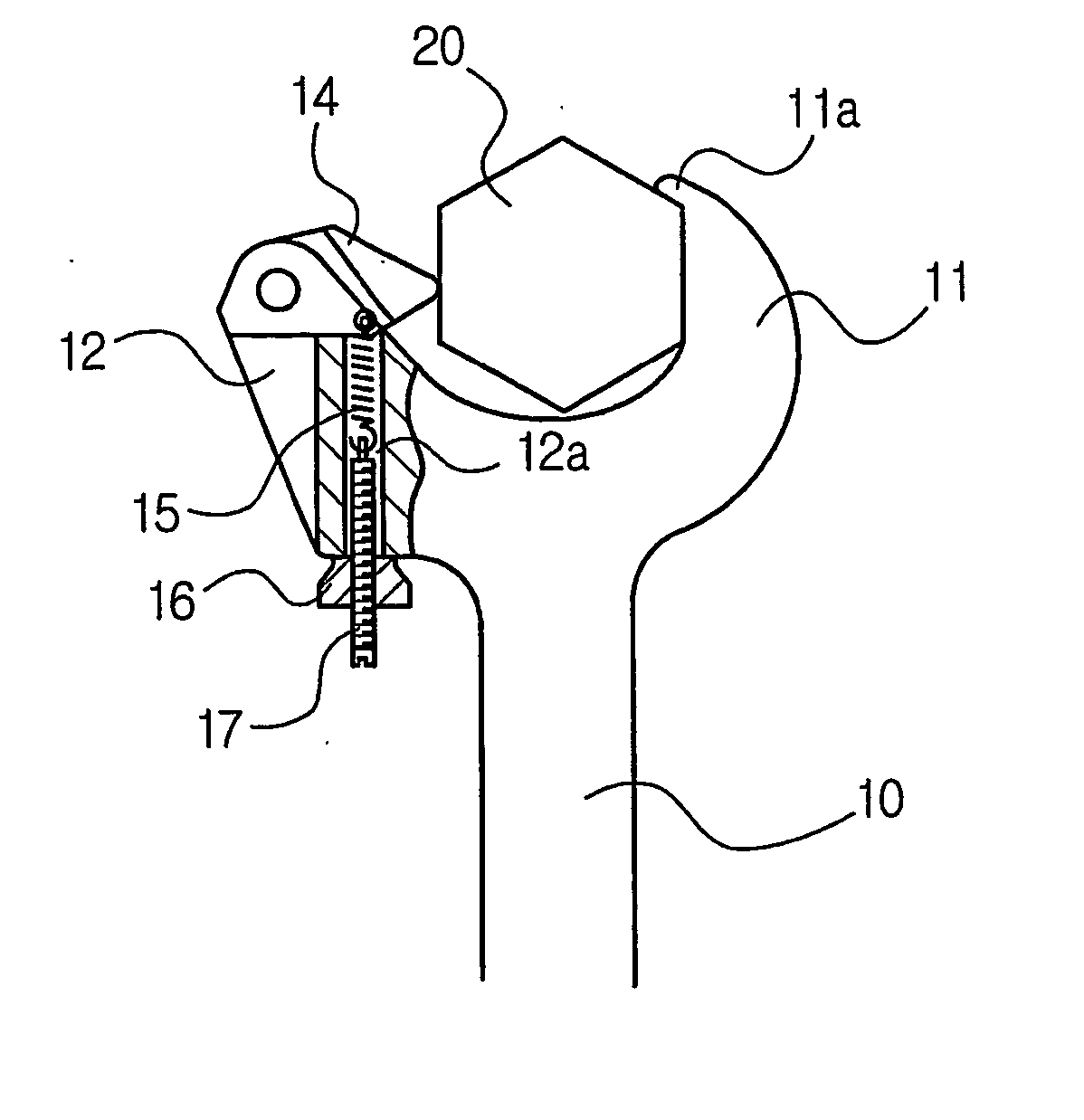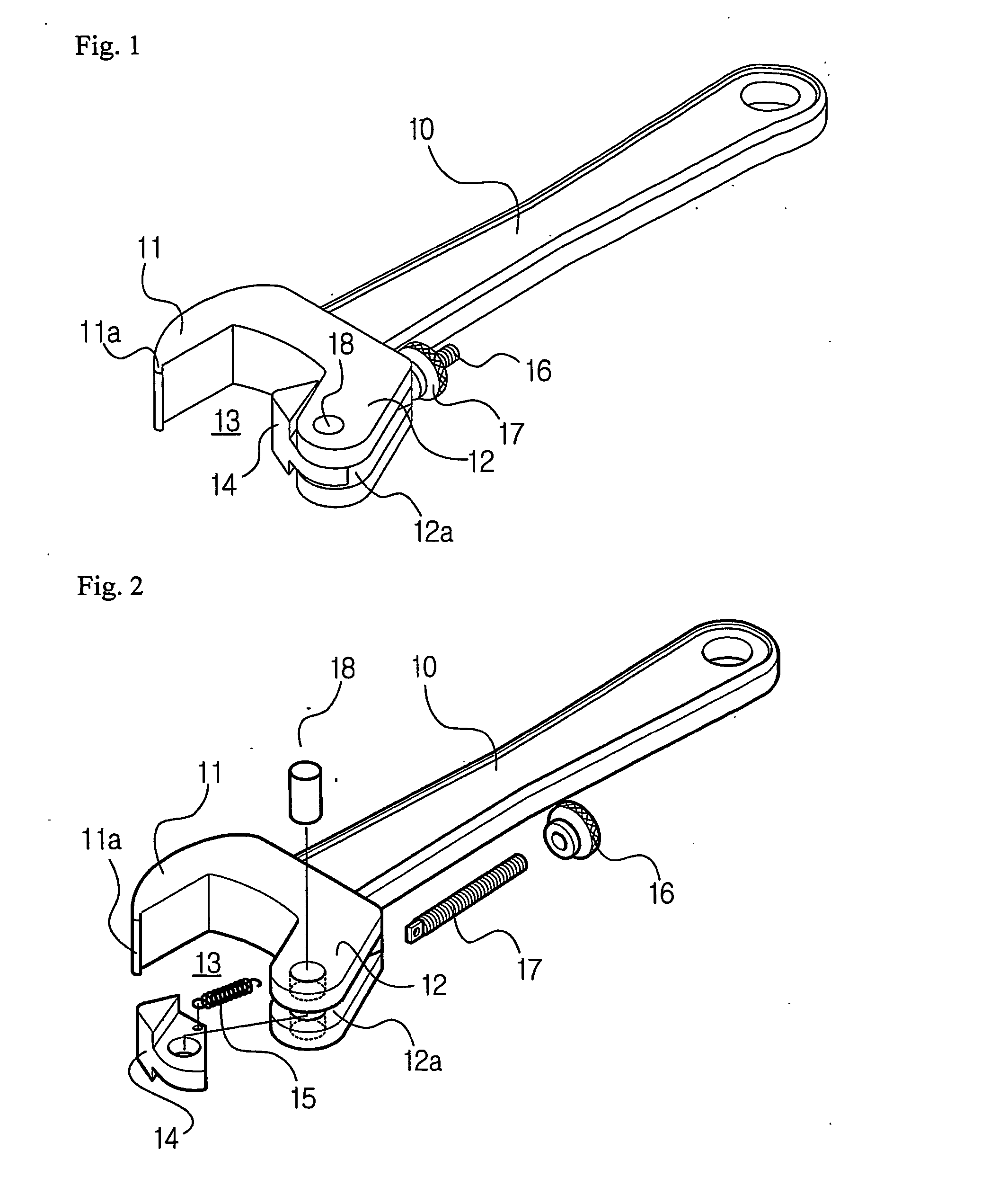Spanner
a ratchet mechanism and spanner technology, applied in the field of spanners, can solve the problems of reducing working efficiency, difficult manufacturing, and inability to use spanners with ratchet mechanisms, and achieve the effects of easy tightening or releasing, large thickness or width, and rarely to be rusty or broken
- Summary
- Abstract
- Description
- Claims
- Application Information
AI Technical Summary
Benefits of technology
Problems solved by technology
Method used
Image
Examples
first embodiment
[0029]FIG. 1 is a perspective view of the spanner according to the present invention, and FIGS. 2 and 3 are respectively an exploded perspective view and a cross-sectional view thereof.
[0030] As shown in the drawings, the spanner according to the present invention comprises a lever (10) in a shape of stick as a handle; a first jaw and a second jaw (11,12) respectively extending from both sides of the lead end of the lever and forming a gripping space (13) therebetween for gripping a bolt (20); a toggle bar (14) installed on the lead end of the second jaw so as to be allowed to be rotated only toward outward of the gripping space; a tension adjustment bolt (16) engaged with the long hole (12b) longitudinally formed on the bottom of the second jaw from the outer surface of the second jaw; a tension adjustment nut (17) for supporting the tension adjustment bolt (16) from the outside of the second jaw (12); and a tension spring (15) for connecting the middle part of the inner side of th...
second embodiment
[0035]FIG. 5 is a perspective view of the spanner according to the present invention, and FIGS. 6 and 7 are respectively an exploded perspective view and cross-sectional view thereof.
[0036] As described in the drawings, the spanner according to the second embodiment of the present invention comprises, a lever (10); a first jaw and a second jaw (11,12) extending from the lead end of the lever (10) to form a gripping space (13) therebetween; a toggle bar (14) rotatably hinged on the lead end of the second jaw so as to be allowed to be rotated only to outward of the gripping space; a tension adjustment bolt (16) engaged with a long hole (12b) longitudinally formed on the second jaw (12) from the outer surface of the second jaw, and a tension adjustment nut (17) connected to the rear end of the tension adjustment bolt (16) from the outside of the second jaw (12); a tension spring (15) connected to the lead end of the tension adjustment bolt (16) for elastically supporting the toggle bar...
PUM
 Login to View More
Login to View More Abstract
Description
Claims
Application Information
 Login to View More
Login to View More - R&D
- Intellectual Property
- Life Sciences
- Materials
- Tech Scout
- Unparalleled Data Quality
- Higher Quality Content
- 60% Fewer Hallucinations
Browse by: Latest US Patents, China's latest patents, Technical Efficacy Thesaurus, Application Domain, Technology Topic, Popular Technical Reports.
© 2025 PatSnap. All rights reserved.Legal|Privacy policy|Modern Slavery Act Transparency Statement|Sitemap|About US| Contact US: help@patsnap.com



